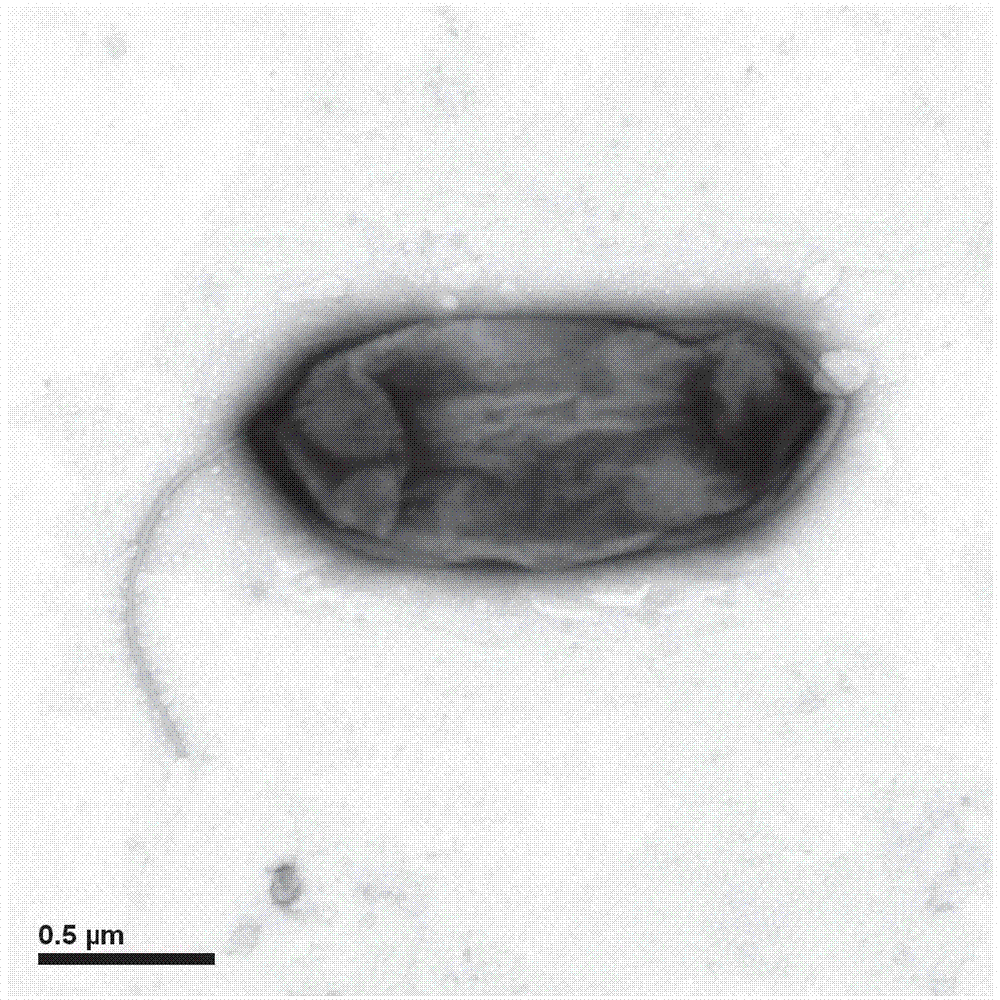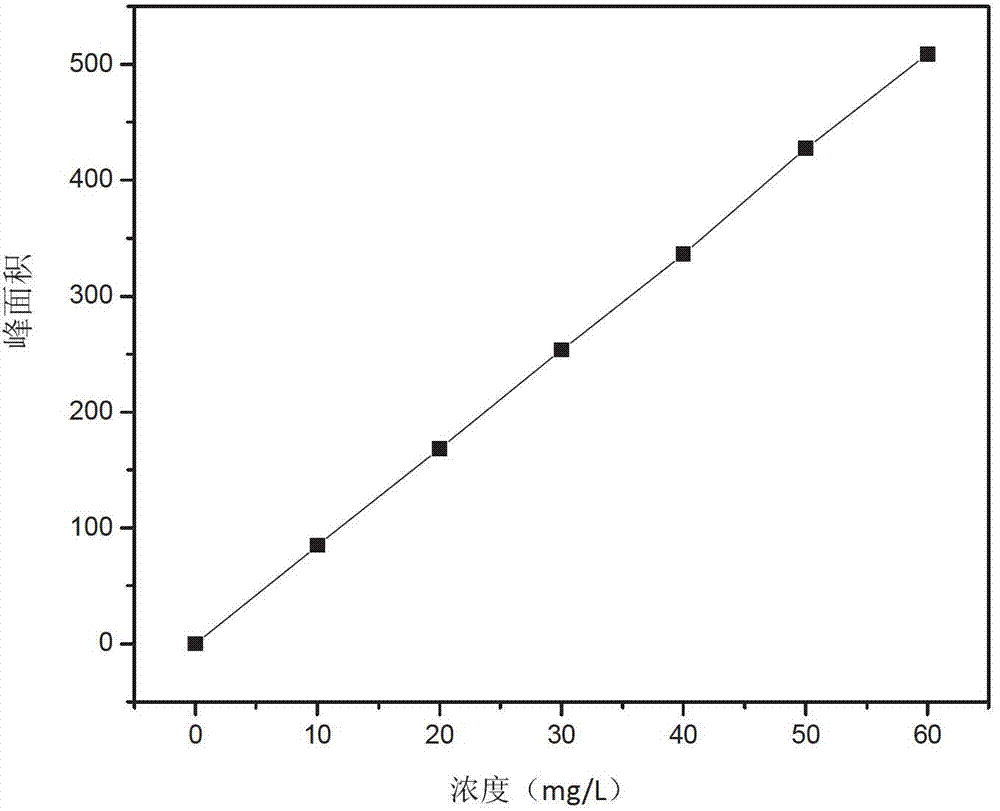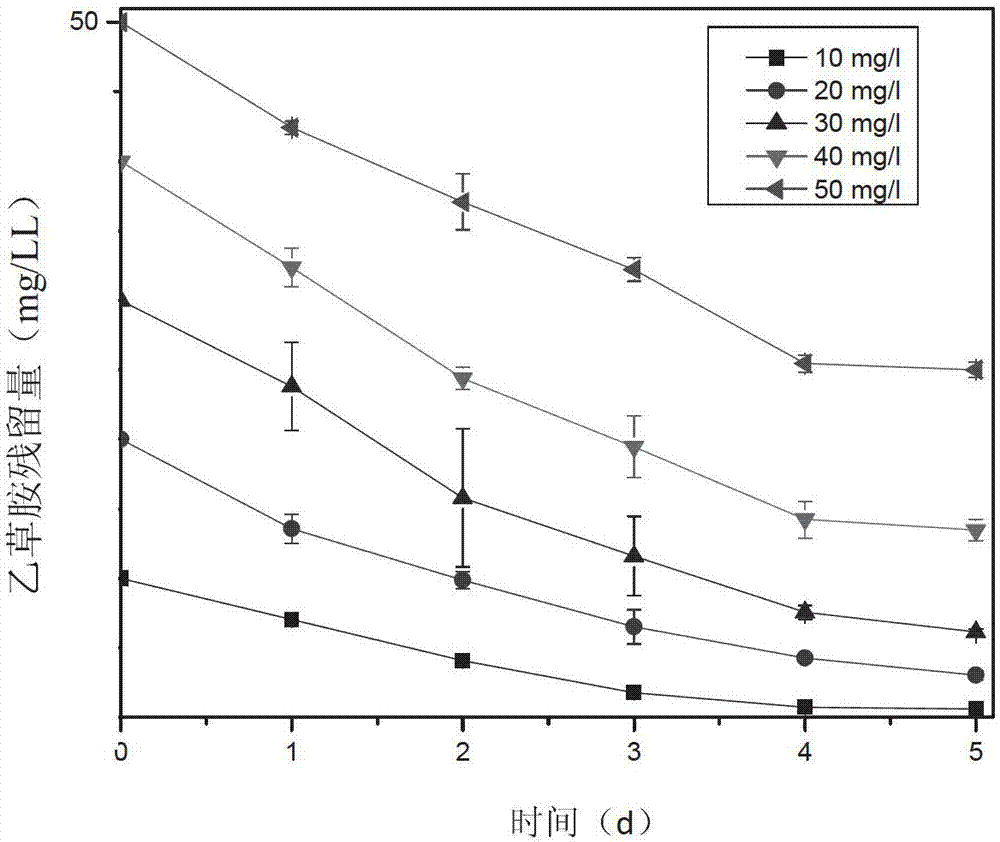Achromobacter sp. D-12 and application thereof in microbial degradation of acetochlor
A technology for the degradation of Achromobacter and microorganisms, which is applied in the direction of microorganism-based methods, microorganisms, biological water/sewage treatment, etc., can solve the problems that Achromobacter has not been found to degrade acetochlor, etc., and achieves low cost and simple preparation process , the effect of good application prospects
- Summary
- Abstract
- Description
- Claims
- Application Information
AI Technical Summary
Problems solved by technology
Method used
Image
Examples
Embodiment 1
[0041] Embodiment 1: Screening and identification of strains
[0042] 1) culture medium
[0043] Inorganic salt culture medium: NaCl 1g, K 2 HPO 4 1.5g, KH 2 PO 4 0.5g, (NH4) 2 SO 4 1.5g, MgSO 4 0.1g, 1ml trace element solution, made up to 1000ml with distilled water, mixed and stirred evenly, natural pH value, prepared after high-pressure steam sterilization (121°C, 20min), and each liter of trace element solution contains MnSO 4 ·H 2 O 0.13g, ZnCl 2 0.23g, CuSO 4 ·H 2 O 0.03g, CoCl 2 ·6H 2 O 0.42g, Na 2 MoO 4 2H 2 O 0.15g, AlCl 3 ·6H 2 O 0.05g, make up to 1000ml with distilled water.
[0044] Enrichment culture solution: Add acetochlor solution to the inorganic salt culture solution so that the concentration of acetochlor is 100 mg / L.
[0045] LB culture medium: Yeast powder 10g, peptone 5.0g, sodium chloride 10.0g, distilled water to make up to 1000ml, mixed and stirred evenly, natural pH value, prepared after high-pressure steam sterilization (121°C...
Embodiment 2
[0052] Embodiment 2: the preparation that contains bacterial cell suspension
[0053] (1) Slant culture: Inoculate Achromobacter sp. D-12 on the slant medium and culture at 30°C for 6 days to obtain the slant of the bacteria; the slant medium is prepared according to the following composition: yeast powder 10g, peptone 5.0g, chlorine Sodium chloride 10.0g, agar 15.0g, water 1000ml;
[0054] (2) Seed culture: Pick an inoculation ring from the slant of the bacteria in step (1) and inoculate it into the inorganic salt culture solution, and cultivate it at 30°C for 6 days to obtain the seed solution; the final concentration of the inorganic salt culture solution is the same as Embodiment 1;
[0055] (3) Expansion culture: Inoculate the seed solution obtained in step (2) into LB liquid medium (100 mL) at an inoculum volume concentration of 10-20 %, and culture with shaking at 30°C and 150 rpm until the logarithmic growth phase, and obtain Bacterial solution, centrifuge the bacter...
Embodiment 3
[0057] Embodiment 3: Acetochlor degradation experiment
[0058] 1) Detection of bacterial concentration and acetochlor content in inorganic salt culture solution:
[0059] The growth of bacteria is detected by ultraviolet spectrophotometer, which is expressed by measuring the absorbance value of bacteria in the culture solution at 600nm.
[0060] In this experiment, reversed-phase high-performance liquid chromatography was used to detect the residual amount of acetochlor in the inorganic salt culture medium. Reverse-phase high-performance liquid chromatography detection conditions: mobile phase is acetonitrile: water = 75:25 (volume ratio), analytical column is Waters C18 column (4.6×250mm, 5μm), flow rate is 1ml / min, injection volume is 20μl , the column temperature is 30°C.
[0061] 2) Acetochlor degradation experiment:
[0062] Take four 250ml Erlenmeyer flasks, add 100ml of inorganic salt culture solution to each, add acetochlor after high-pressure steam sterilization (...
PUM
 Login to View More
Login to View More Abstract
Description
Claims
Application Information
 Login to View More
Login to View More - R&D
- Intellectual Property
- Life Sciences
- Materials
- Tech Scout
- Unparalleled Data Quality
- Higher Quality Content
- 60% Fewer Hallucinations
Browse by: Latest US Patents, China's latest patents, Technical Efficacy Thesaurus, Application Domain, Technology Topic, Popular Technical Reports.
© 2025 PatSnap. All rights reserved.Legal|Privacy policy|Modern Slavery Act Transparency Statement|Sitemap|About US| Contact US: help@patsnap.com



